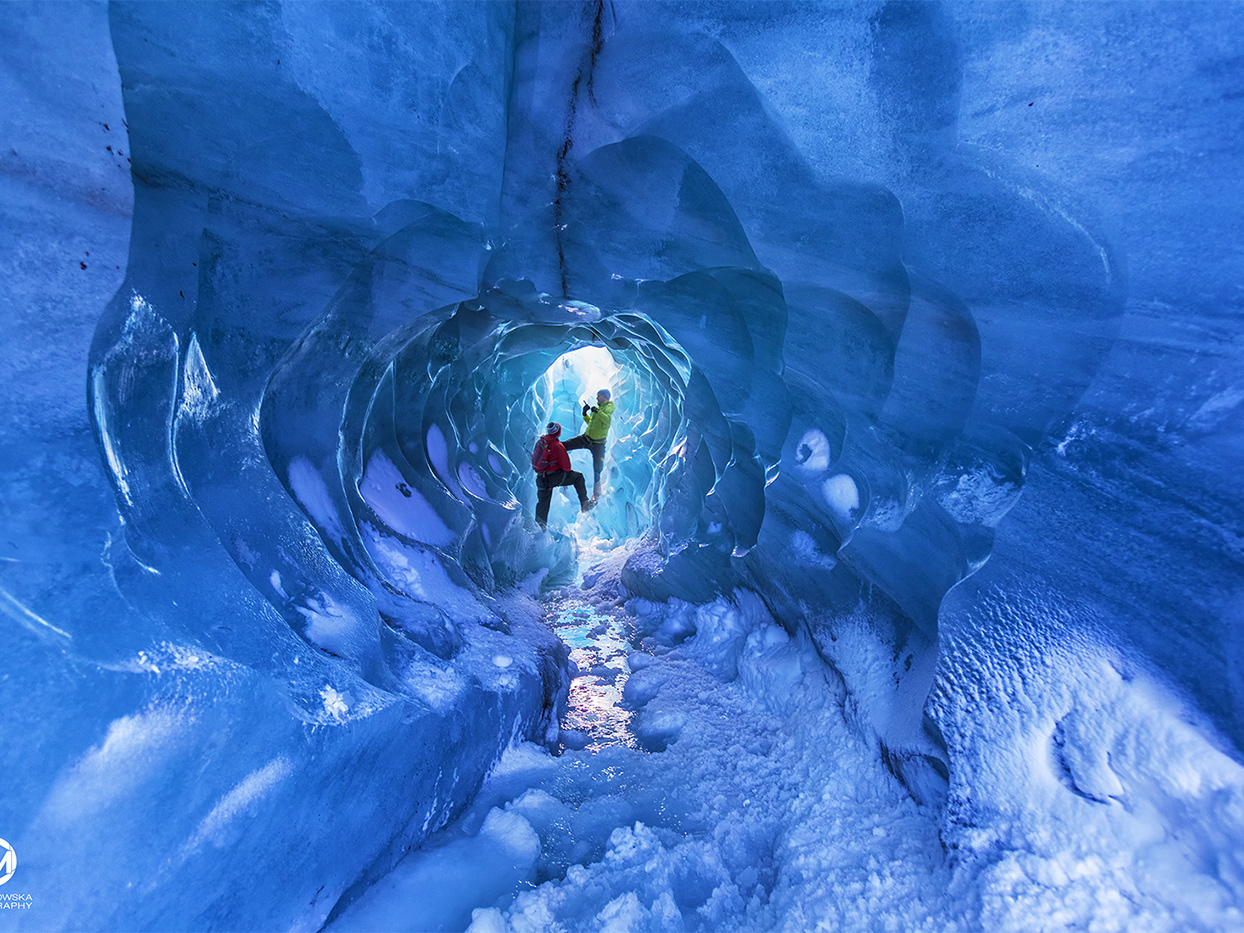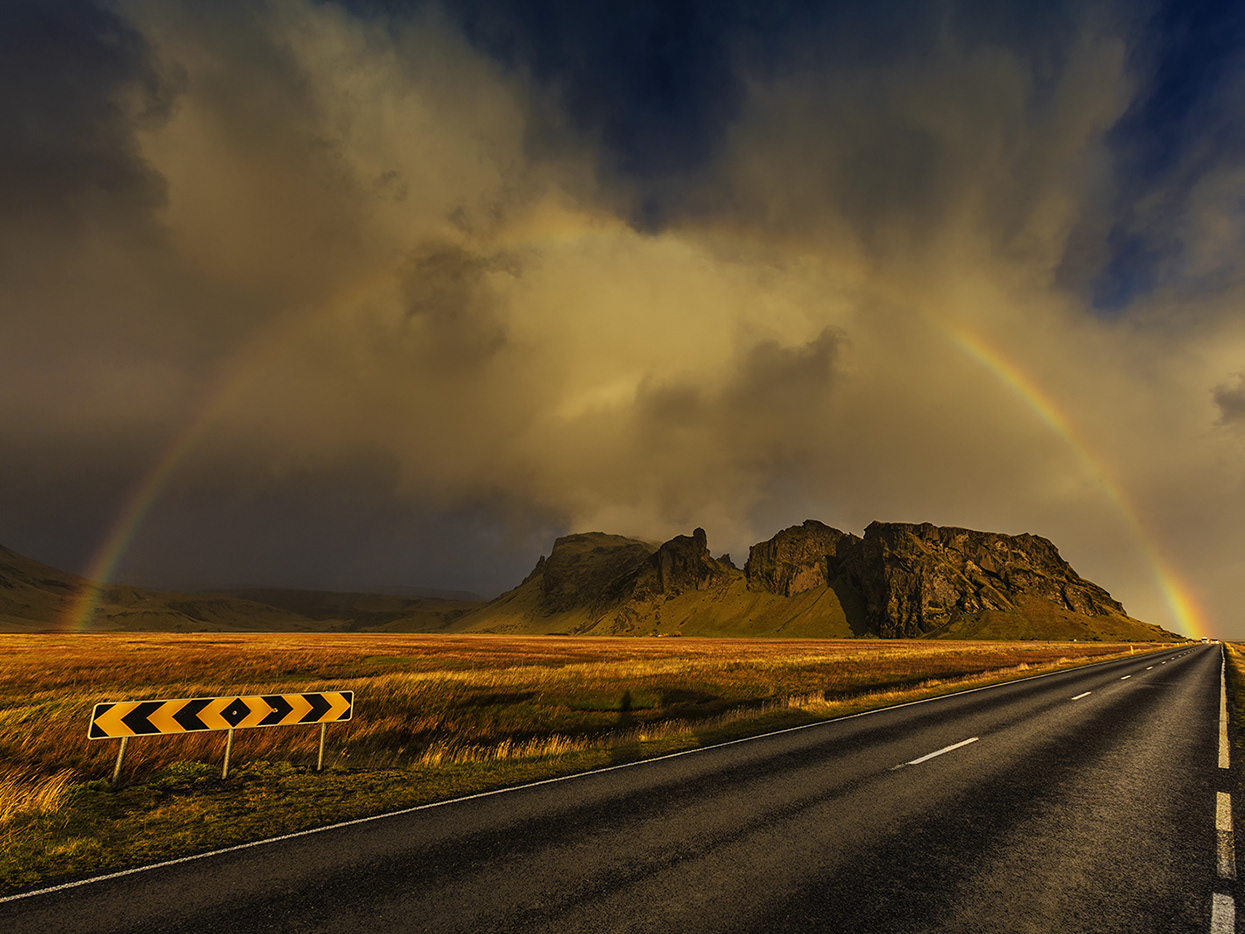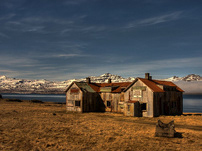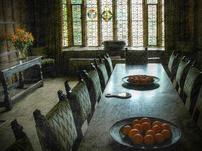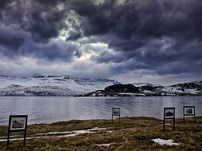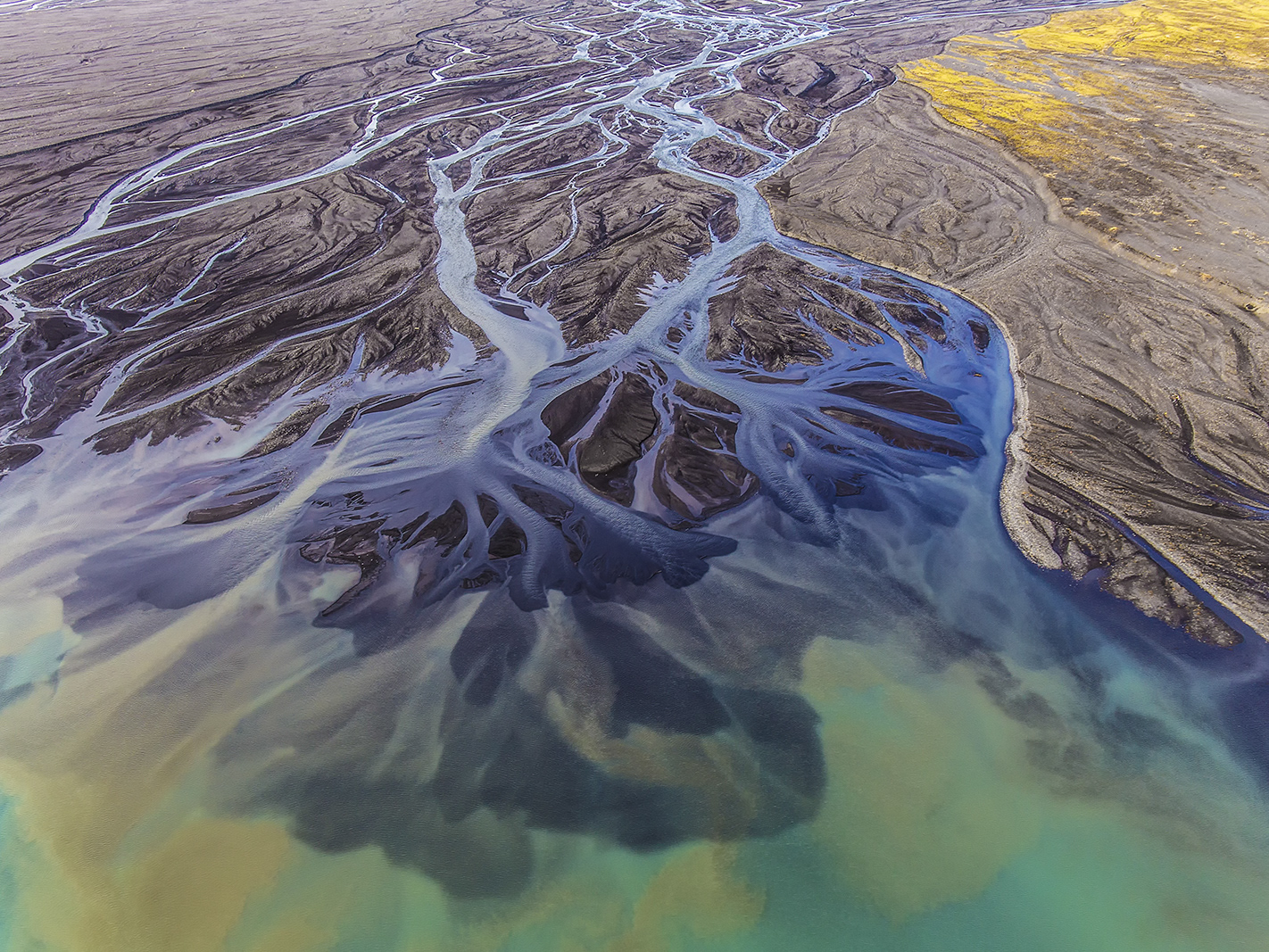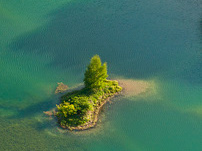

S T U P A OF D E S C E N T F R O M T U S H I T A H E A V E N
/ Kópavogur, Iceland /
The Buddha’s mother, Mayadevi, was reborn in Tuṣita Heaven. In order to repay her kindness the Buddha went there to teach the dharma to her. This stupa commemorates the Buddha’s return from this celestial realm in order to continue his teachings on earth.

Lha-Bab Duchen is celebrated on the 22nd day in the ninth lunar month of the Bhutanese calendar (which coincided with 29 October in 2010), and marks the anniversary of the Buddha’s descent from the heavenly realm to the earth. It is on this day that Buddha Shakyamuni descended to The Heaven of Thirty-Three Trayastrimsa in order to give teachings to benefit the gods in the desire realms, and to repay the kindness of his mother by liberating her from Samsara. This is considered to be one of the great deeds of the Buddha among eight great deeds. It is part of the Buddhist tradition to engage in virtuous activities and prayer on this day.
When Shakyamuni’s mother dies, she is reborn as a deva in the Trayastrimsha heaven which is presided over by the Brahmanical god, Indra. After the Buddha attains enlightenment, he goes to Trayastrimsha to teach the Abhidharma to his mother and other celestial beings. After three months of teaching in Trayastrimsha, the Buddha decides to return to his disciples and lay followers. His descent from the heaven takes place at Sankashya in modern Uttar Pradesh, India.
The Dharmapada-Atthakatha records that when the Buddha is ready to return, Indra makes three ladders for the Buddha’s descent. The ladders connect the summit of Mount Meru, where the Trayastrimsha heaven is located, and the earthly human sphere, near Sankashya city. The ladder, made of jewels, in the middle is used by the Buddha; the right ladder of gold is used by Indra; and the left ladder of silver is used by Brahma. Indra and Brahma are depicted as the Buddha’s attendants.
The most important message that the Descent from the Trayastrimsha has come to represent occurs with the Buddha’s arrival at Sankashya. Crowds of people gather there eagerly awaiting the Buddha’s return. Everyone wants to greet the great teacher. According to Chinese narratives there is a nun called Utpali, who vows that she would be the first person to greet the Buddha when he descends from the heaven. However, a simple nun cannot compete against the powerful kings and princes with their elaborate entourages occupying the best spots near the ladders. Yet, as a result of Utpali’s devotion, she is transformed into a universal monarch, accompanied by seven treasures and the most elaborate troops, and thus she is able to secure the best position to fulfill her vow. She is the first to greet the Buddha, upon which she reverts back to her original appearance. Recognizing Utpali’s devotion, the Buddha predicts her future enlightenment .
As such, the event represents the archetypal prediction of one’s enlightenment by the Buddha.
The story (represented in the painting), begins from the right top corner.
The Buddha is shown here preaching in Trayastrimsha heaven. He is seated in a cross-legged manner, with his right hand in the varada, or bestowal, gesture while his left hand is in the vitarka, or teaching, gesture. There are four figures kneeling before him, listening to his teachings.

Below the heaven, Mount Meru is depicted rising from the center of the great ocean. The mountain is divided into four terraces. The first terrace is the home of the pitchers of water; the second one is the home of the bearers of flower garland; the third one is the home of those ways intoxicated; and the fourth, or the highest one, is the home of four guardian kings of the four cardinal directions. This does not depict a physical structure, however, it suggests a sacred place in ones own heart-mind. The sacred place is defined by water, decorated by flowers, and then gathered around by ecstatic practitioners and guardian kings. This is exactly the process that one needs to go through in Buddhist rituals.
In the center is the Buddha descending down from the heaven with Indra and Brahma. The Buddha makes the varada, or bestowal, gesture with his proper right hand. His left hand makes the vitarka, or teaching, gesture. Brahma is seen on the left of the painting carrying a chauri or a fly-whisk. Indra, on the right, carries an umbrella. Figures who carry chauris or umbrellas usually serve as servants or attendants to high ranking persons. The appearance of Indra and Brahma as the Buddha’s attendants demonstrates the supremacy of the Buddha over the Brahmanical gods. The other lesser attendants hold various other offerings, including a chakra, a conch, food offerings, and lotus flowers. In the top left corner of the painting, three flying celestial beings are shown pouring offerings, celebrating the Buddha’s descent. Numerous treasures appear in the sky to mark this auspicious moment.


At the base of the triple stairs, a group of ten people are shown awaiting the Buddha’s return. The figure in very front of the stairs is most probably the nun Utpali. She wears royal garb and rich ornaments. Her right hand holds lotus flowers, and her left hand extends to greet the Buddha. Other figures, waiting to greet the Buddha, hold various offerings including an umbrella, a fan, a chakra, a gem, a cymbal, lotus flowers, and a plate of fruit. Two elephants, probably belonging to a royal entourage, are shown beside these figures.
In the bottom center of the print is a stupa on a lotus base. The stupa bears triple stairs on it, commemorating this great moment, and honoring the sacred site of Sankashya. Numerous offering are placed on either side of the stupa, suggesting the peoples’ veneration of this holy place. In the lower right corner of the print is an image of a Buddha seated on a pedestal. Both of the Buddha’s hands display the varada, or bestowal, gesture. Two figures kneel before him and hold up their offerings. The shaven-headed figure in monastic robe is undoubtedly the nun Utpali who has returned to her original form. The scene depicts the moment when nun Utpali receives the prediction of enlightenment by the Buddha. This indicates the promise of enlightenment for every Buddhist devotee, even a woman.

A stupa with the three-faced, eight-armed figure of Ushnishavijaya is shown above the prediction scene. Her primary right hand makes the varada, or bestowal, gesture and the primary left hand displays the abhaya, or fear not, gesture. She also holds an arrow, a rosary in her middle and upper right hands, and a vase, a bow, a water pot in her lower, middle and upper left hands. Ushnishavijaya is the “Victorious Ushnisha,” and she is shown here as the mother of all Buddhas.
On the day that the Buddha descended from Trayatrimsa he performed another miracle. While he was standing on the jewel stairway, he looked upwards and the worlds of the devas (devaloka) and the Brahmas (Brahmaloka) were revealed. Then he looked downward, and the hell realms were revealed. At that time the celestial realms, the hell realms and the human realms throughout the universe were all visible to each other.
The scene shown here is from the time the Buddha descended from Trayatrimsa. The event is the Buddha’s “opening of the worlds.” The worlds that he opened at that time were the three worlds of heaven (devaloka), hell (yamaloka) and earth (manussaloka).
Devaloka is all the worlds from the Brahmaloka down to all the celestial realms. Manussaloka is the world of human beings. Yamaloka is the lower realms, all the levels of hell down to the lowest hell, avici.
When the Buddha was descending from heaven, he looked upwards and all the worlds from the human world up to the highest heavenly realm were illuminated. As he looked around in each direction of the universe it became clear and unobstructed. And when he looked downwards, the illumination continued down to the hell realms.
At that instant the beings living in these three realms could all see each other. The human beings saw the devas, the devas saw the humans, the humans and the devas saw the hell beings, and the hell beings saw the devas and humans. And all could see the Buddha descending from Tavatimsa gloriously.
The Dhammapada commentary, composed by Buddhaghosa, states that “On this day when the beings of all realms saw each other, there was not one who did not want to be the Buddha.” The Pathamasambodhi goes even further, saying; “At that time, of all the devas, humans and beasts, even down to the tiniest red or black ant, who saw the Buddha, there was not one among them who did not desire Buddhahood.”
Buddhahood is the state of being a Buddha. If we were to make the story of the Buddha opening up all the worlds so that the beings could all see each other more mundane, we may interpret it to mean that on that day the Buddha gave a teaching to which people came to listen in great number, and from which people could sees the results of good and bad deeds: the result of bad being suffering, which is hell, and the result of good being happiness, which is heaven, and the possession of morality is what differentiates people from the animals.
References:
Beal, Samuel, tran. Si-Yu-Ki. Buddhist Records of the Western World. London: Trubner & Co. Ltd, 1884; reprint, Delhi: Oriental Books Reprint Corp., 1969.
Burlingame, Eugene Watson, tran. Buddhist Legends, Part III. Cambridge, Massachusetts: Harvard University Press, 1921.
Legge, James, tran. A Record of Buddhistic Kingdoms. Oxford: Clarendon Press, 1886; reprint, New York: Dover Publications Inc.,1965.
Huntington, John C. “Pilgrimage as Image: The Cult of the Astamahapratiharya, Part II,” Orientation Vol. 18, No. 8 (1987):55-68.
Huntington, Susan L & John C. Leaves from the Bodhi Tree. Dayton, Ohio: The Dayton Art Institute, 1990.
Huntington, Susan L. The Art of Ancient India. New York & Tokyo: Weatherhill, 1985.
This article from Bhutan Journals describes the iconography of the Buddha Shakyamuni Descending from Tushita Heavens to the Earth. I insert below to a larger image of the same painted theme, for easier reference to the detailed description that follows. – Buddhist Art News.
© Copyright InfoAll material in my gallery may not be reproduced,
copied, edited, published, transmitted or uploaded in any way
copied, edited, published, transmitted or uploaded in any way
